- Best Bird Tips, Bird Bath, Bird Baths, Birdbaths, Birding Accessories, Ceramic Bird Baths, Deck-Mount Birdbath, Ground Baths, Hanging Bird Bath, Heated Bird Bath, Misters and Birdbath Drippers, Mosaic Bird Bath, Pedestal Bird Bath, Solar Fountain Bird Baths, Water Wiggler
Keep Mosquitoes Away: Attract More Birds with moving Water Features
If you’re anything like me you love summer! I love the later evening sunsets, the sound of cicadas singing their song and if there is a body of water within 100 miles, I’d like to be in it. Picture this, it’s a hot summer Saturday, you’re sitting poolside with a margarita in hand at a family BBQ and suddenly you find yourself swatting a long needled pest sitting at a country buffet of your blood, a Mosquito. It’s the gross reality of summer. Not only do mosquitos leave behind ichy and sometimes large welts, they also carry with them illness-causing diseases that can wreak havoc on your immune system.
Never fear, NATURE IS HERE. Birds are a GREAT all-natural option to help keep mosquitos to a minimum in your yard this summer. Various species of birds are known for their nack of ridding yards across the United States with my summer time enemy.
- Purple Martins – The Mosquito Slayer. These guys are known for their incredible ability to hunt these pesky insects. They come in large families that make them really effective in controlling Mosquito populations.
- Chickadees & Titmice – Tiny but Mighty. They may be small in size, but pack a punch when it comes to keeping mosquitos in check. Trust us, you’ll want them on your side.
- Swallows – To-Go Order. These guys are remarkable. They can catch mosquitos mid flight, making them excellent hunters you’d love to see in your yard.
You’ll want to attract several of these heavy hitters if you’d like to keep mosquitos out of your yard this summer. The best way to attract birds in summertime is by providing food water or shelter. In this case, lets take a look at water. Providing your feathered friends with a cool space for them to splash around in water is absolutely paramount. In the heat of summer there’s simply no better way to entice friendly fliers than with moving water!
Accessories for bird bath fountain and leaf misters will absolutely bring more birds (and butterflies) to the garden. Because
 they keep water from becoming stagnant, it stays fresher and mosquitoes can’t lay their eggs in it either.
they keep water from becoming stagnant, it stays fresher and mosquitoes can’t lay their eggs in it either.Both solar fountains and those using electricity recirculate water in bird baths. Drippers and leaf misters run off the outdoor spigot and although very slow and adjustable, do utilize a continuous water flow. They come as complete kits with everything required to be up & running in minutes… no kidding!
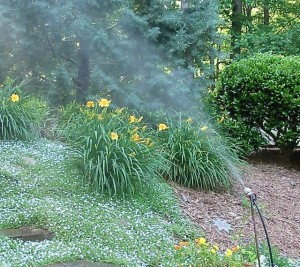 Leaf misters offer lots of options for placement too. You can attach them to a branch or trellis, (50 ft. of rubber tubing is included) attach to a deck bracket or even a simple plant stake in the garden. We prefer the latter as the mister may easily be moved around to benefit the garden by watering different sections daily.
Leaf misters offer lots of options for placement too. You can attach them to a branch or trellis, (50 ft. of rubber tubing is included) attach to a deck bracket or even a simple plant stake in the garden. We prefer the latter as the mister may easily be moved around to benefit the garden by watering different sections daily.Butterflies especially adore the gentle mist, while hummingbirds and other songbirds like chickadees and bluebirds will wait for them to start each morning… it’s like a spa for them and makes a spectacular viewing experience for host too.
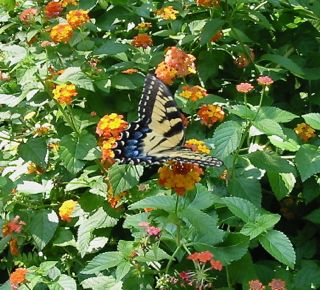 Place leaf misters near nectar-producing plants like lantana and enjoy the show!
Place leaf misters near nectar-producing plants like lantana and enjoy the show!Moving water in a bird bath or somewhere in the landscape is the ticket to seeing more bird activity during warm summer months. In fall, simply pack them up and store away for next season. A one-time investment that promises to bring many seasons of use and enjoyment… and more winged activity to your place!
-
Seven Tips: How to Handle Unwanted Bird Nests on Your House
A bird has built a nest in an undesirable spot on your house, front porch, window ledge, back door or really any inconvenient place close to your house, now what?
We’ve all been there. One morning you walk out your front door and see a bird darting back and forth, carrying twigs and grass. When you return home, there is a full-blown nest right above your front door. At first it can be quite charming, however several days pass and you are attacked by a protective mama bird, or you just generally don’t enjoy all the shall we say “droppings” left behind. Whatever the reason, there are some do’s and don’ts of managing the inconvenient nesting situation.
First, the good news. The nesting period is not forever, and some species may only be a matter of weeks. The nesting cycle for most songbirds is around 4 weeks total, from laying of the egg to chicks leaving the nest.
- IDENTIFY. First things first, start by identifying which feathered friend has taken up residence on your porch. NestWatch has a great tool for identifying the type of bird who has built the nest, so you know what you’re dealing with.
- PROTECT. Native birds’ nests are protected. Believe it or not, there is actually a law in place (Migratory Bird Treaty Act of 1918) to protect birds and their nest nationwide. If in question, we always suggest you check with your local wildlife authority. Doing this will also give you a better idea of their nesting cycle so you can keep an eye out.
- DO NOT DISTURB. Once a bird has laid eggs in the nest, you’re out of luck. Do not touch or remove the nest. Try not to use the area around the nest until the young have fledged to ensure that the parents will not abandon their nest. If this is not possible, try to minimize your presence around the nest; many yard birds are tolerant of occasional disturbances.
- REMOVE (SOMETIMES). Keep an eye out for nest activity. After the brood has fledged and moved on, its safe to remove to nest. We suggest using gloves, as bird droppings or the nest may have harmful contaminants. Most birds only nest once a year, however birds like the American Robin, Eastern Bluebirds, House Wrens, American Goldfinch and Northern Cardinals can produce several broods a year. This makes it important to identify the type of bird. For songbirds with multiple broods in a season If the nest is in a safe location and not too terribly troublesome, please leave it be if at all possible.
- PREPLAN. Start thinking ahead on how you’d like to discourage them from nesting in the same spot next year.
- Hang a Wind Chime: Birds aren’t particularly keen on the movement and sound of the wind chimes, especially if they’re made from metal or shiny materials. This will act as a natural deterrent if placed close enough to the undesired nesting spot.
- Mount a Light: Nothing disturbs my sleep quite like light and birds aren’t too different. Flashes of bright light will deter birds from nesting in a particular area as the variation between light and shadow may signal danger.
- Install Bird Spikes: This is our least favorite option and should only be used if the nesting spot is physically dangerous for future broods. These rods are dull and will not harm the birds, but there are certainly more preferred options than this.
- PROVIDE. Giving birds a suitable place to build a house is the best way to relocate a nest going forward. If you know which type of bird was in the undesired nest, you can select a birdhouse that fits that particular birds needs. If you are ever unsure, we are always more than happy to help point you in the right direction! [email protected]
- ENJOY. Nature is one of our greatest gifts. While a nest may not be in the most ideal location, savor the moment. Try to keep in mind that new feathered friends are on the way. The joy they bring far outweighs any short-term nest location inconvenience.
-
Barn Swallows and Purple Martins are on the Way!
With holidays behind us and the fanfare gone- What’s the next event looking forward? Noticing there was still daylight at 6:00 PM, it’s a natural signal that migrations will be underway soon and the swallows will be first. The early birds are purple martins and their cousins too- Barn Swallows!
Scouts begin arriving over the Gulf of Mexico and most southern states about mid-January. Migrations will follow via the same fly-way and before you know it, they’ll be here! Martins’ breeding season is fairly short (unlike resident bluebirds who can have up to 3 clutches per season) so preparation is the key to attracting these most desirable birds. Actually, this holds true for for attracting hummingbirds, barn swallows, orioles and any migratory birds. Have your birdhouses and feeders (nest cups too) ready to go before scouts’ arrival!
New for 2024, these exquisite Purple Martin Houses are US made of durable vinyl (that looks like wood) with stackable floors available for easy expansion. Crescent entries help deter starlings while porches offer plenty of perch space. Timeless architecture in crisp black & white will remain classic in all landscapes. Although rack & gourd systems are extremely popular among Martins and their landlords, our new vinyl Martin homes offer something a bit more classic with all of the great features that benefit Martin families… and you can bet martins will be happy to call them home. When set in a desirable habitat, scouts will let the families know of these excellent accommodations!
In the eastern US, purple martins depend solely on man-made housing. Be it gourds, aluminum, wood or vinyl, martins will take to most housing if habitat is ideal. Way back in colonial days, Native Americans first started using gourds to attract purple martins (the largest of the swallow family). A main advantage was and still is natural insect control along with the sweetest of songs. This is also why barn swallows are extremely advantageous to have around your property.
Both species are very family-oriented and will return to the same nesting spots (with kids in tow) year after year. But hosting martins takes more than just putting up a Martin house. A vigilant approach is required for successful fledges and returning families. Non-native birds such as European Starlings and House Sparrows are enemy #1 to both martins and barn swallows. In fact, they’re brutal to all of our native cavity-nesting birds- including bluebirds. Simple territorial issues will wreak havoc on our nesting birds. Both starlings and house sparrows will overtake Martin houses, kill nestlings and even kill adult martins. They’ve been well known for decimating our birdhouse occupants and wiping out populations in some areas.
Monitoring your Martin house is extremely important. Starlings and sparrows (if in the area) will predate martins to claim territory so they must be deterred for martins’ breeding season. Whether you agree or not, these non-native birds are about the only ones where it’s not only legal- but encouraged to dispose of both invasive species.Other helpful hints for attracting martins include ditching any chemicals in your yard because insects are their main diet. Installing a baffle or predator guard on your matin pole also deters any curious climber from reaching eggs. Habitat is key with very open spaces, preferably near water. Martin houses should be installed at least 30 ft. from your home and taller than any nearby trees which require a 40 ft. clearing at minimum.
Check out these Purple Martin Groups on social media, whether Martin novice or seasoned landlord, the popularity of hosting martins has exploded over the years. Anything purple-martin related can be found, mistakes others may have experienced great advice, interesting images and facts… in just a few clicks!
• PMCA (Purple Martin Conservation Association)
• Purple Martin Landlords and Wannabes
• Purple Martin Fanatics
• Purple Martin Files
• Purple Martin Group
Your state may also have their own Purple Martin Society. Most important- have your Martin House up & ready to go prior to scouts’ arrival.Oh yeah… Martins adore white feathers for nest construction! If you see the birds, toss a few feathers in the air and they’ll dive-bomb to retrieve. Scatter a few on the ground near your new Martin house too. Offering white feathers with some nesting material will be appealing to mom and dad. A standard suet cage work’s well. Simply hang it so that martins will see your welcoming offer.
Happy birding and here’s to longer daylight hours!!
Hummingbird Feeders
about feeders & accessories

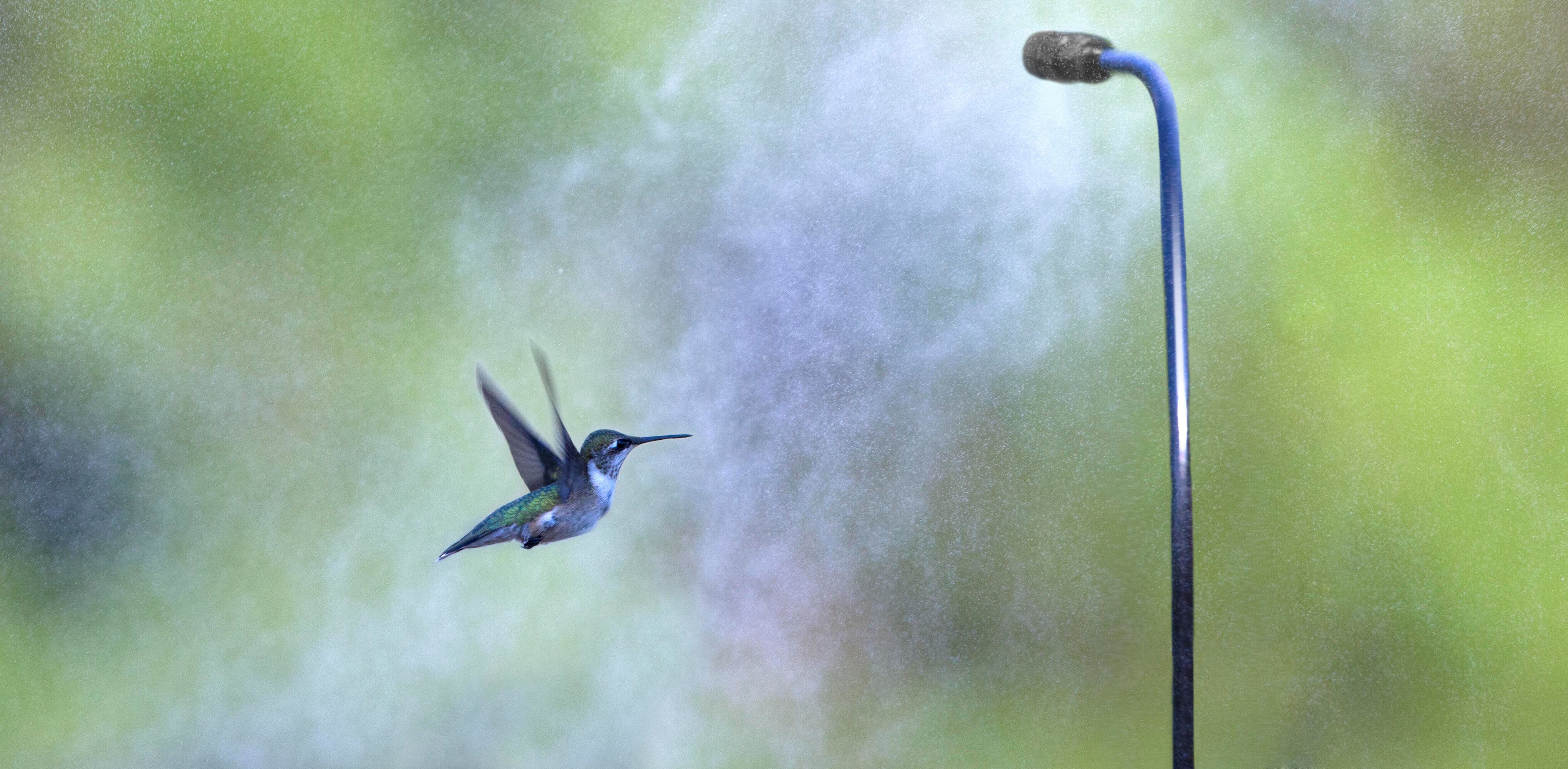
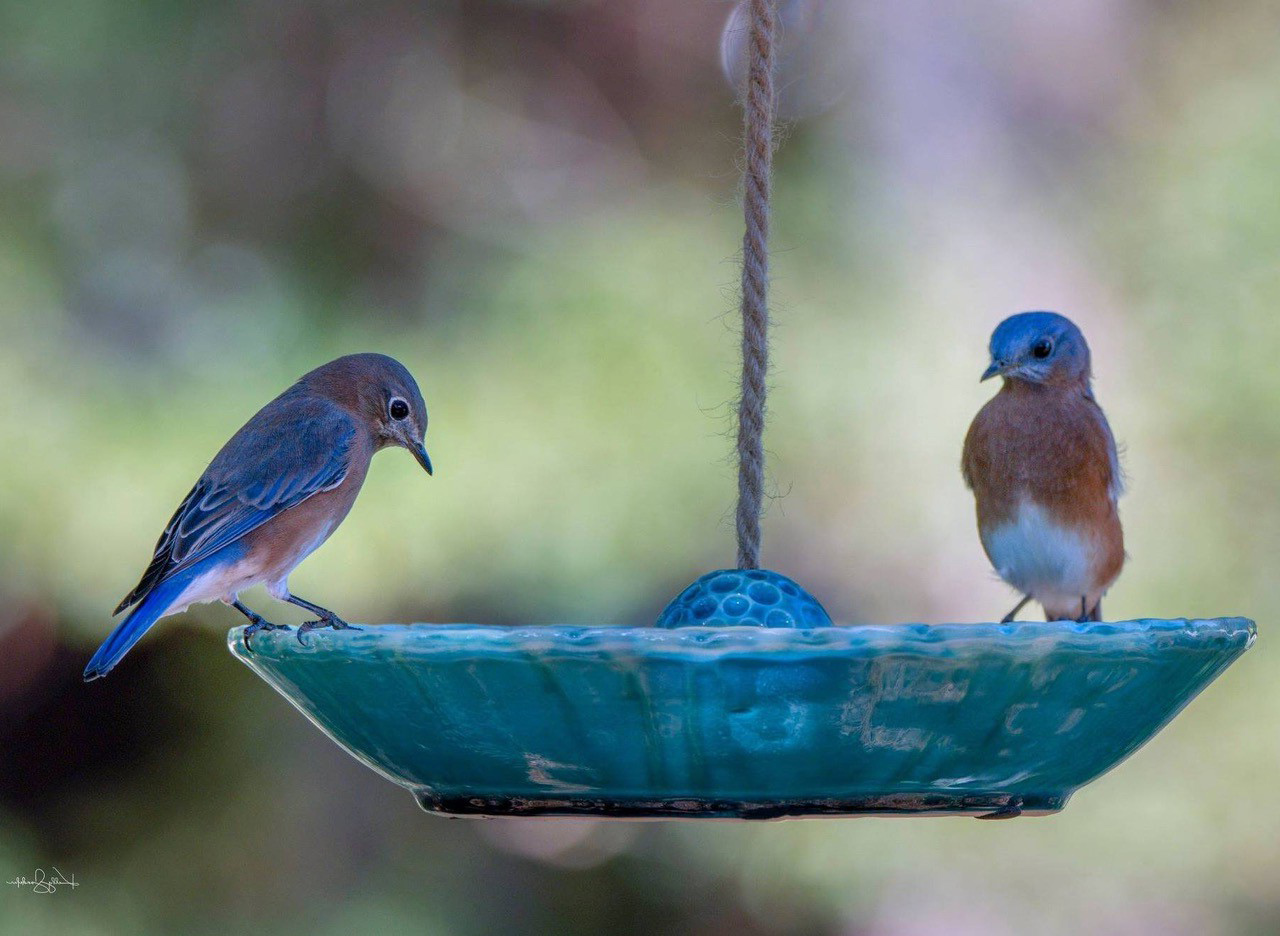
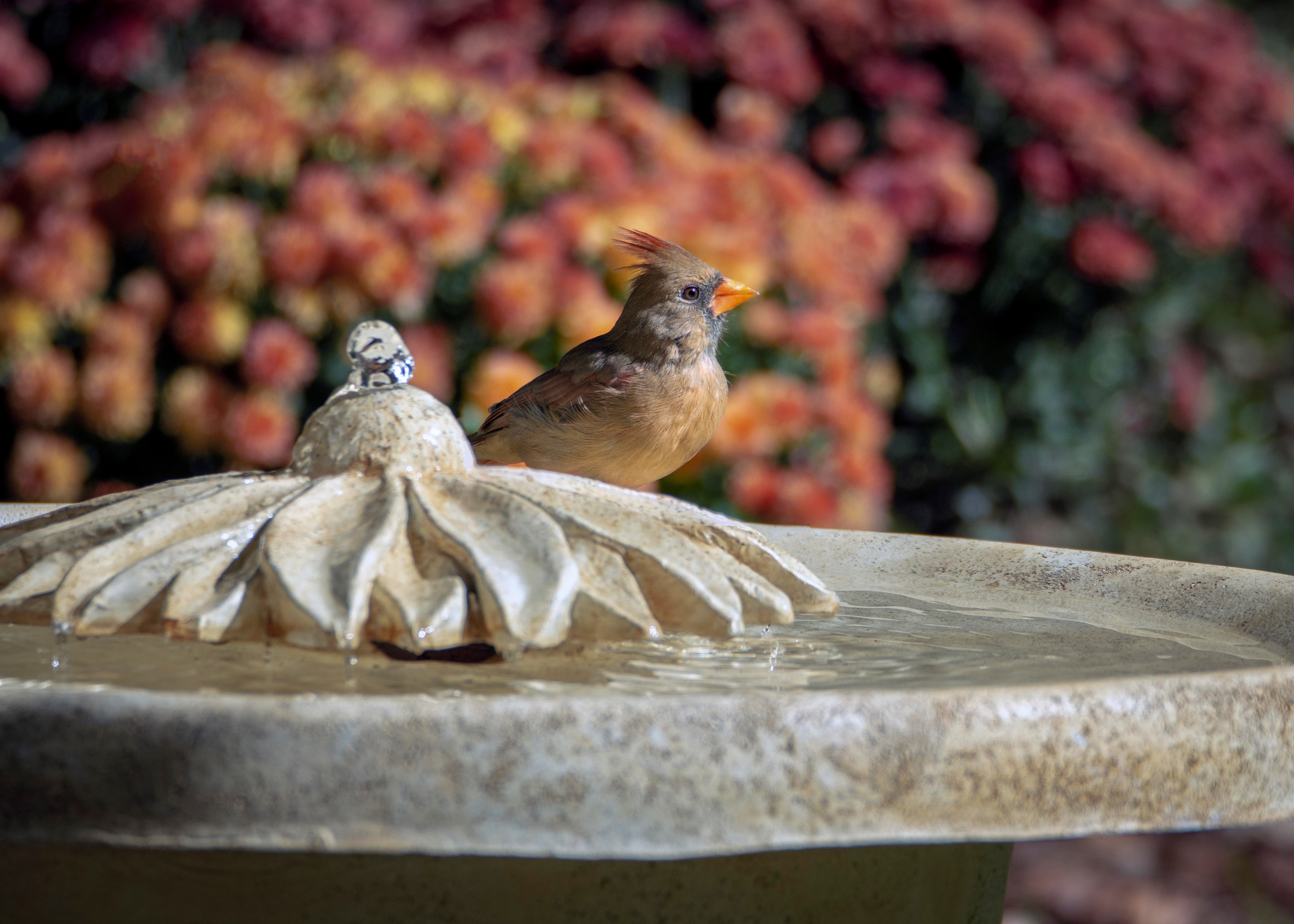

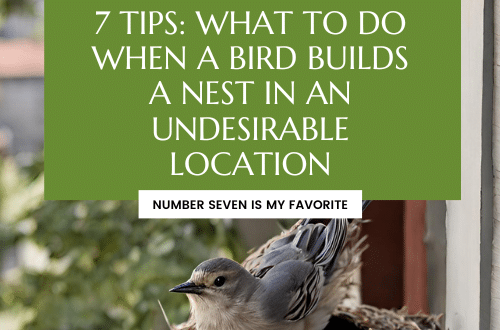
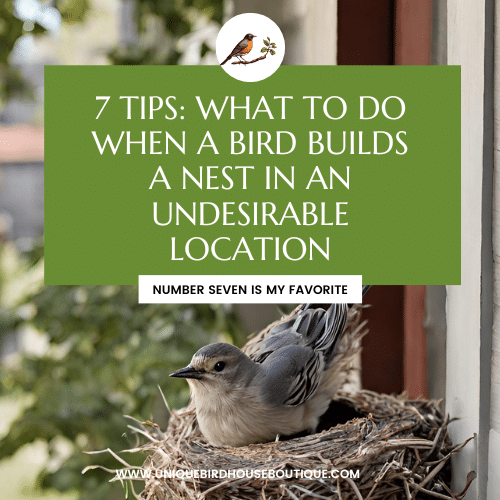
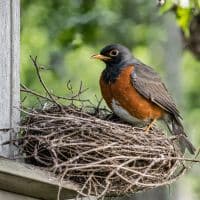
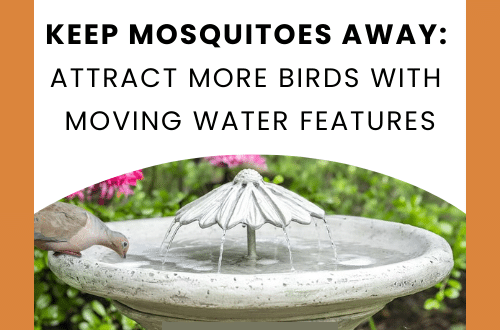
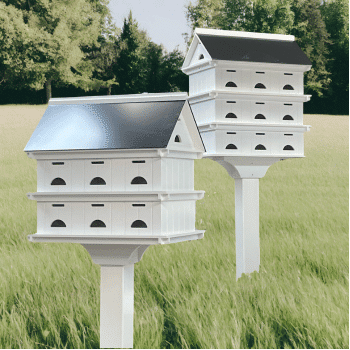 New for 2024, these exquisite
New for 2024, these exquisite